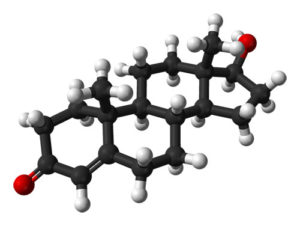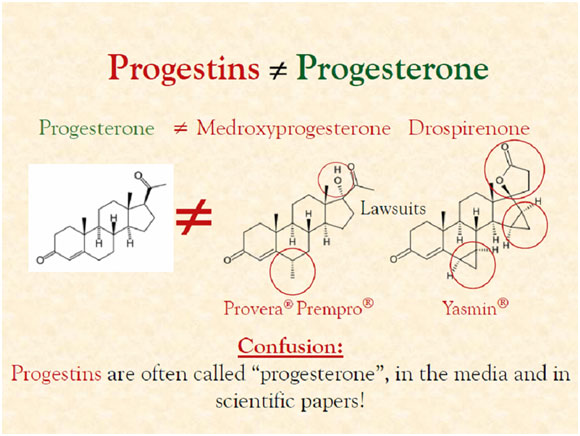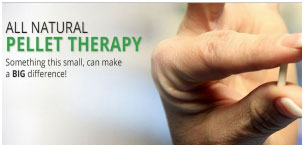Pellet Therapy in Reno
Pellets: Our Favorite Form of Delivering Bioidentical Hormone Therapy
Introduction
Anyone living in Northeast Pennsylvania will attest to the fact that if you haven’t been out of the cold and snow for at least a short period by March, you are a newborn pup and Seasonal Affective Disorder is your Mama, leading you around by the scruff of your neck.
The winter of 2002-2003, the dark ages, I call it, was one such time for me. I hadn’t been anywhere and was ‘cabin fevered’to the max. I found a “skills workshop” in Disney World, and who wouldn’t want to go to Orlando to see Epcot Center, It’s a Small World After All, and the Jefferson Airplane exhibit. (Jefferson Airplane, btw, is an indoor, pitch dark rollercoaster that twists 360 degrees at various points. Who knew?)
 The “skills” I learned that trip changed my career and life entirely. First up was a new product one injects into your face that removes wrinkles! (I was the first non-plastic surgeon to administer Botox in the Wilkes Barre-Scranton area.) The second was numbing an area in the upper buttock, making a 2-inch incision, then placing testosterone cylinders, via a large, harpoon-like trochar, followed by several sutures to close the wound. The effect was a burst of testosterone, followed by a sharp drop off. We had very few takers.
The “skills” I learned that trip changed my career and life entirely. First up was a new product one injects into your face that removes wrinkles! (I was the first non-plastic surgeon to administer Botox in the Wilkes Barre-Scranton area.) The second was numbing an area in the upper buttock, making a 2-inch incision, then placing testosterone cylinders, via a large, harpoon-like trochar, followed by several sutures to close the wound. The effect was a burst of testosterone, followed by a sharp drop off. We had very few takers.
Fast forward a dozen or so years. Suppose we streamlined the procedure, changed the delivery system to a time release method that decreases the procedure interval to two to three times per year, better measure the dosage of the hormones, and need only a tiny incision and rarely need a suture to close the wound?
The chief complaints of BHRT administration with creams and gels are daily administration and a high likelihood of transferring hormones to spouses, children, pets, goldfish and other assorted lovers. Creams and gels take up to eight weeks to become effective.
Injectables are painful, must be performed once or twice a week, inconvenient for travelers, and subject at times temperature swings. Injectable, on average, take four weeks to become effective.
Enter BHRT pellet administration. Modern BHRT pellets release physiologic doses of plant-based, chemically the same as we produce ourselves, hormones, providing optimal therapy. Pellet therapy in Reno is quick, easy, nearly painless following our protocol, cost-effective, and is the quickest onset set of action, four to seven days, of any method of BHRT treatment.
What are Pellets?
BHRT pellets, estrogen or testosterone, are pressed cylinders, smaller than a grain of rice, made specifically for the Clearfield Medical Clinic by a PCCA certified compounding pharmacy. The FDA approved a 75-mg testosterone pellet in 1972.(1)
Pellets provide consistent, healthy hormone level for 3-5 months in women and 4-6 months in men. In our experience, after two or three cycles, the effects of the pellets may last up to 6 months in both men and women.
Pellets avoid fluctuations in hormone levels, maintain normal ratiosof one hormone to another, important for optimal health and disease prevention, and do not increase the risk of blood clots as conventionalsynthetic hormone replacement therapy does.
Pellets are superior in relieving menopause symptoms, maintaining bone density, restoring sleep patterns, and improving sex drive, libido, sexual energy, response and performance. (2)
Testosterone pellets in women treat migraine and menstrual headaches, vaginal dryness, urinary incontinence, urgency and frequency. In both men and women, testosterone increases energy, lean body mass, strength, bone density, a sense of well-being, improves memory and concentration. Testosterone is an anti-depressant and anti-anxiety agent and decreases fat mass. Adequate levels of testosterone are necessary for optimal mental and physical health. Associated with Alzheimer’s and Parkinson’s disease, multiple sclerosis and diabetes mellitus, type 2, low testosterone levels are problematic at any age.
Bioidentical pellet therapy is the most popular form of treatment at the Clearfield Medical Clinic. From a modest one to two implants per quarter, we now perform at least one and usually two to four implants per day. First described in 1938, no other form of hormone delivery is as convenient or effective as implant therapy.
How Can They Not Hurt?
 Dr. Clearfield ten years of emergency medicine experience enabled him to develop a nearly painless technique of pellet insertion. Patients presented to the emergency department at all hours with varying types of lacerations and wounds. The ER is always on edge, waiting for the “big one,” a heart attack, multiple trauma injuries, etc. A twelve-inch slash across someone’s face is “minor” dispatched as quickly as possible. After injecting a local anesthetic into the wound, “just a little pick and burning,”two huge orderlies held the patient down while Dr. C. repaired the lesion. If lucky, the repair ended about the time the anesthetic took effect.Thus the standard care in emergency training, circa 1979.
Dr. Clearfield ten years of emergency medicine experience enabled him to develop a nearly painless technique of pellet insertion. Patients presented to the emergency department at all hours with varying types of lacerations and wounds. The ER is always on edge, waiting for the “big one,” a heart attack, multiple trauma injuries, etc. A twelve-inch slash across someone’s face is “minor” dispatched as quickly as possible. After injecting a local anesthetic into the wound, “just a little pick and burning,”two huge orderlies held the patient down while Dr. C. repaired the lesion. If lucky, the repair ended about the time the anesthetic took effect.Thus the standard care in emergency training, circa 1979.
One night, Dr. Clearfield opened a wound on his hand cooking. Never again did he utter those immortal words of every ER physician: “Just a little pick and burning.”
“A little pick and burning my foot.”
One of the joys of our BHRT and anesthetic clinic is the luxury of planning our day. Dr. C. takes his time preparing the insertion site. It’s easier on you, the patient. And, it is easier on him.
After cleansing the skin, Dr. Clearfield applies a laser grade 20/8/8 anesthetic skin cream. We allow the cream to settle for a minimum of five minutes. Dr. C removes the cream, then applies a cold ethyl chloride spray. Next comes the “ouch” time. He injects into the partially anesthetized area, ten cc total of a Lidocaine with epinephrine, lidocaine plain and sodium bicarbonate combination.
We allow a minimum of five and up to minutes, by the clockperiod to elapse. At this point, you the patient, would not feel a three-foot harpoon much less our 3.2 mm diameter inserter.
At this point pellet insertion is a snap. We make a less than the quarter-inch incision, insert the trochar, deposit the pellets, and are out in less than two minutes for women, and, as men require more pellets, less than four minutes for men. We close the incision with steristrips, cover it with Tegaderm, a clear bandage, and a pressure dressing. (The pressure dressing is usually redundant. However, my mentor, Dr. George Speace, of Northeast Pennsylvania plastic surgery fame drilled into my head no wound was complete without at least a temporary pressure dressing.)
The patient removes the dressing that night or the next morning, allows the steri-strips to fall off, will occasionally use Vitamin E oil to soften the scar though most times it leaves little or none, and the job is complete.
Rarely, three times, in over 1000 cases, in the past two years, we needed to place a suture for hemostasis. Twice was the same patient with a bleeding disorder and on prednisone, and one was a pole dancer who went to work the same night we placed the pellets. We now admonish all our patients, men and women, “no pole dancing tonight.”
Complications
Insertion complications parallel any incision based procedure: Minor bleeding or bruising, skin discoloration, infection, and possible pellet extrusion.These are rare. As we use one time only disposable kits, inadequate sterilization of instruments is not an issue. Approximately two years ago we were forced to use a different supplier due to aninventory issue, on the supplier’s end and we had in a two-week period, three patients with pellet extrusions. Returning to our roots when our preferred instruments were available again, the Clearfield Medical Clinic has had no such issues to date.
Excess testosterone metabolism can cause oily skin and hair, “acne,” typically a skin breakout on the neck and shoulders and,in women, a slight increase in facial hair. If your beginning testosterone is low, you may experience a temporary “surge.” We control the sevia supplementation or medication.
Supplements to lower testosterone for women include reishi mushrooms, red clover, black cohosh, chasteberry, maca root, and saw palmetto. Lowering total saturated fats, decreasing high-glycemic index foods, adding fiber and consuming phytoestrogenic foods such as tofu, soya milk, and flaxseed are remedies on the dietary end.
Spironolactone is a potassium-sparing diuretic that blocks the side effects of testosterone excess.
In our experience, these symptoms resolve in 10-20 days at which point we discontinue the supplements and medications.
We treat men with testosterone excess with saw palmetto, metforminor spironolactone.
Estrogen excess results in breast tenderness, gynecomastia, vaginal bleeding, water weight gain and emotional lability. For women we double our progesterone dose until the symptoms resolve. In men we may add Progesterone Cream, Chrysin, DHEA and pregnenolone, and, if extreme, anastrozole 1 mg 1-2x/wk.
Testosterone stimulates bone marrow production of red blood cells. Testosterone therapy administered by any method, may cause an elevation in the red blood cells. Though testosterone does not cause a change in clotting factors, if the hemoglobin and hematocrit (blood count) reach a level of 18.5 and 55 respectively, we recommend a blood donation.
Post op concerns are surprisingly few. As previously noted, we do frown upon pole dancing.Theoretically vigorous activity within 48 hours of insertion may cause pellet expulsion. If the patient is immunocompromised or has had a joint replacement we add in a low dose antibiotic.
Do pellets carry the same danger of breast cancer as other forms of hormone replacement therapy?
The great hormone cancer scare of 2002 courtesy of the Women’s Health Initiative studied oral synthetic hormones derived from horse urine. It is no surprise that the body would protect itself against these foreign invaders by forming cells around the affected tissues, in this case the breast, ovaries and uterus. Excess cells, by definition, are cancer. The hullabaloo does not include pellets as they are bioequivalent in composition. In fact, using bioidentical hormones decreases breast and uterine cancer by ten percent over using no hormone replacement at all.

Testosterone, decreased breast proliferation and lowered the risk of breast cancer, by 50% over those who use no hormonal therapy. In 1268 pre-and postmenopausal women, 142/100,000 in the testosterone group and 390/100,000 in the control group developed breast cancer. The testosterone-treated group exhibited half the breast cancer risk of the not treated group. Put another way, the no testosterone group had more than double the risk of breast cancer than the treated group.(3)
Breast cancer treatment often includes anti-estrogen therapy. Menopausal symptoms, including hot flashes, sleep disturbance, depressed mood, irritability, and fatigue,often severe, are common due to treatment-induced hormone deficits.
43 breast cancer survivors were implanted with two 60 mg of bioidentical testosterone along with 4 mg. of anastrozole pellets every 90 days. The 43 patients have undergone a total of 75 subcutaneous insertion procedures.93% of the patient’s reached therapeutic goals of serum estradiol levels were ≤30 pg./mL and testosterone (range 120 to 518 ng/dL). (4)
No significant adverse effectsoccurred in any breast cancer survivors treated. No breast cancer has had disease recurrence after three years of therapy. Three patients with metastatic breast cancer exhibited no disease progression since the onset of treatment.Testosterone implant therapy for advanced breast cancer dates back to the 1940’s.
Safety
Bio-identical progesterone, including FDA approved Prometrium â, does not increase the risk of breast cancer as does synthetic progestins. Progesterone, used vaginally, does not negate the beneficial effects of estrogen on the heart like the synthetic progestins. Estriol, an estrogen widely used in Europe is a bio-identical hormone does not bind strongly to estrogen receptors and does not stimulate breast tissue. Numerous studies indicate that vaginal estriol does not increase the risk of breast cancer (RR 0.7). Estriol lowers the risk of recurrence and death in breast cancer survivors.
Balanced hormones are the key to health and disease prevention.
Hair Loss
Imbalances in estrogen, testosterone, and thyroid hormones are common causes of hair loss. Pellet implants thicken hair and moisten scalp hair.
What is the onset of action in pellet therapy?
Most patients notice a significant difference with 4-7 days of the implant. Rarely ten days go by without improved symptomatology. Of course, diet, lifestyle, stress reduction, blood sugar balance and total hormone balance are critical for optimal health.
How long do pellets last?
In women, pellets last between three and five months and in men, four to six months.
What about Progesterone?
True confession. The year 1979. The place: Metropolitan Hospital, Philadelphia, Pa. (Don’t bother looking it up, it’s now a condominium. Bad management. Not my doing.) Dr. Bill, me, is training in obstetrics and gynecology. Gynecologists do what gynecologists do, that is, they perform hysterectomies. Lots of them.
Postoperatively, to prevent hot flashes, we prescribed synthetic, horse urine-based, estrogen. Natural progesterone acts as estrogen’s protector, reducing stimulation of the breasts and preventing breast cancer. Its’ use was deemed irrelevant as progesterone’s primary effect, erroneously related,was to prevent the stimulation of the uterine lining caused by estrogen.

Of course, we didn’t prescribe progesterone. Instead we used a synthetic progestin, Provera. Progesterone and synthetic progestins are not one in the same.
Progesterone (not progestin) receptors reside in bone tissue, the brain, heart, bladder, breast and uterus.
FDA approved in 1998, Prometriumâ, is a commercially available bioidentical hormone. Also available as a compound, topicallyoras a vaginal cream, or asan oral capsule, progesterone delivery is versatile. Unfortunately, due to its nature the progesterone pellets are not yet ready for prime time.
Only oral progesterone (100-200 mg) and vaginal progesterone (45-90 mg) protect the uterine lining from estrogen stimulation.
Pre-menopausal patients’ progesterone therapy is cycled, i.e. administered on nights 14-25. Doses range 6.25 mg up to 250 mg orally, and 3 to 30 mg transdermal, depending on symptoms and lab values.
Other Pellet Indications
Pellets address every indication for oral and transdermal hormone therapy.Severe PMS, post-partum depression, menstrual or migraine headaches, sleeping disorders, sexual dysfunction, and hormone deficiencies (testosterone) created by any form of contraception are rife for pellet therapy.
Hormone Monitoring
Every patient undergoes a laboratory evaluation before beginning any hormone therapy.
David, age 70, referred bya prominent psychologist, because of fatigue, weakness, apathy, loss of muscle tone, poor libido and overall loss of joy. The referral slip stated: “Treat with testosterone.”
Not unreasonable, especially for a 70-year-old. However, David’s serum testosterone level was more than adequate for a thirty-year-old, 700 ng/ml with a free testosterone of 14 pg./ml. Unfortunately, David had, unbeknown to him, a virulent form of acute lymphocytic leukemia. Treating David with testosterone would have been, in the immortal words of Egon Spengler of Ghostbuster fame, like crossing the streams. Very bad.
Pellet therapy in Reno renders serum laboratory levels unreadable. We opt for symptoms and saliva levels as a follow up in most cases. We repeat labs before each insertion for the first year, then once or twice a year after that.
The Final Word
Bioidentical hormone pellets are a safe and effective alternativefor both men and women. Pellets are convenient, economical, and provide a stable, predictable, hormonal environment. Pellet results are as or more effective than oral, intramuscular or topical hormone administration in regards to bone density, sexual function, mood, cognitive function, urinary incontinence, vaginal dryness, breast health, lipid profiles, hormone ratios and metabolites.

For more information or to schedule an appointmentclick below.
- Jockenhövel, J., Vogel, E., Kreutzer, M., et al. Pharmacokinetics and pharmacodynamics of subcutaneous testosterone implants in hypogonadal men; Clinical Endocrinology: Volume 45, Issue 1July 1996 Pages 61–71. http://onlinelibrary.wiley.com/doi/10.1111/j.1365-2265.1996.tb02061.x/full
- Handelsman, DJ, Mackey, MA, Howe, C, et al.; An analysis of testosterone implants for androgen replacement therapy; Clinical Endocrinology: Volume 47, Issue 3, pages 311–316, September 199, http://onlinelibrary.wiley.com/wol1/doi/10.1046/j.1365-2265.1997.2521050.x/abstract
- Glaser and Dimitrakakis. Reduced Breast cancer incidence in women treated with subcutaneous testosterone, or testosterone with anastrozole: a prospective, observational study. Maturitas 2013 Dec;76(4): 342-9.
- Glaser RL “Subcutaneous testosterone-anastrozole therapy in breast cancer survivors” ASCO Breast 2010; Abstract 221. MedPage Today Reviewed by Dori F. Zaleznik, MD; Associate Clinical Professor of Medicine, Harvard Medical School, Boston. October 04, 2010
Other Reference
- Pastuzak AW, Mittakanti H, Liu Li, et al. Pharmacokinetic evaluation and dosing of subcutaneous testosterone pellets.Androl. 2012 Sept-Oct;33(5):927-37.
- Abraham Morgentaler, M.D., Testosterone for Life
- Glaser and Dimitrakakis. Reduced breast cancer incidence in women treated with subcutaneous testosterone, or testosterone with anastrozole: a prospective, observational study. Maturitas. 2013 Dec;76(4):342-9
- Glaser, et al. Testosterone pellet implants and migraine headaches: a pilot study.Maturitas. 2012 Apr;71(4):385-8.
- Glaser R, York AE, Dimitrakakis C. Beneficial effects of testosterone therapy in women measured by the validated Menopause Rating Scale (MRS). Maturitas.2011 Apr;68(4):355-61.
- Burger HG, Hailes J, Menelaus M, Nelson J, Hudson B, Balazs N. The management of persistent menopausal symptoms with oestradiol-testosterone implants: clinical, lipid and hormonal results. Maturitas 1984;6(4):351.
